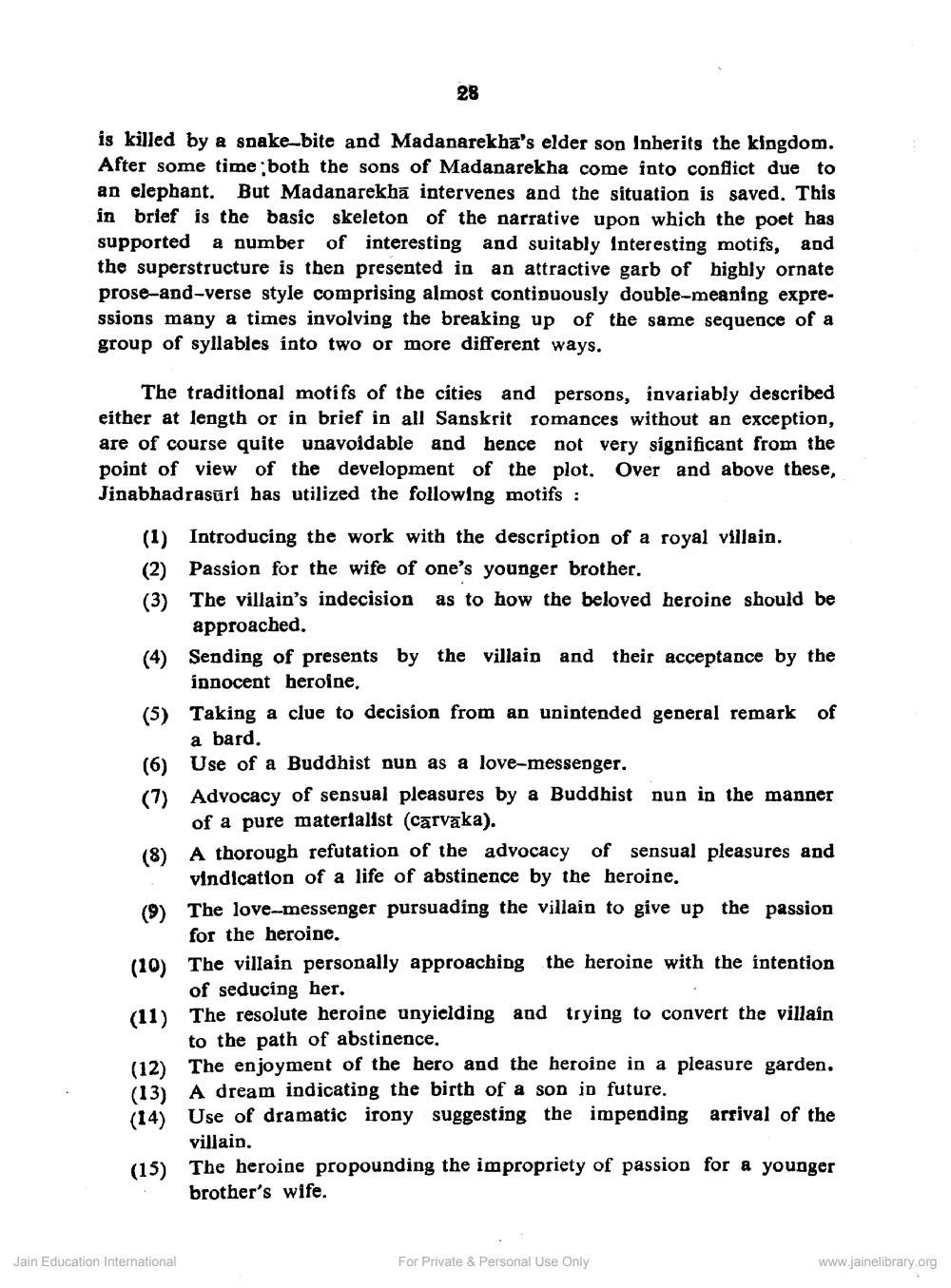________________
is killed by a snake bite and Madanarekha's elder son Inherits the kingdom. After some time: both the sons of Madanarekha come into conflict due to an elephant. But Madanarekha intervenes and the situation is saved. This in brief is the basic skeleton of the narrative upon which the poet has supported a number of interesting and suitably Interesting motifs, and the superstructure is then presented in an attractive garb of highly ornate prose-and-verse style comprising almost continuously double-meaning expressions many a times involving the breaking up of the same sequence of a group of syllables into two or more different ways.
The traditional motifs of the cities and persons, invariably described either at length or in brief in all Sanskrit romances without an exception, are of course quite unavoidable and hence not very significant from the point of view of the development of the plot. Over and above these, Jinabhadrasūri has utilized the following motifs :
(1) Introducing the work with the description of a royal villain. (2) Passion for the wife of one's younger brother. (3) The villain's indecision as to how the beloved heroine should be
approached. Sending of presents by the villain and their acceptance by the
innocent heroine, (5) Taking a clue to decision from an unintended general remark of
a bard. (6) Use of a Buddhist nun as a love-messenger. (1) Advocacy of sensual pleasures by a Buddhist nun in the manner
of a pure materialist (carvāka). A thorough refutation of the advocacy of sensual pleasures and
vindication of a life of abstinence by the heroine. (9) The love-messenger pursuading the villain to give up the passion
for the heroine. The villain personally approaching the heroine with the intention of seducing her. The resolute heroine unyielding and trying to convert the villain
to the path of abstinence. (12) The enjoyment of the hero and the heroine in a pleasure garden. (13) A dream indicating the birth of a son in future. (14) Use of dramatic irony suggesting the impending arrival of the
villain. (15) The heroine propounding the impropriety of passion for a younger
brother's wife.
Jain Education International
For Private & Personal Use Only
www.jainelibrary.org




